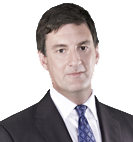Investment portfolios today barely resemble those of earlier days due to the larger variety of asset classes on offer; fund managers and asset consultants have also become more sophisticated with how they diversify portfolio risks.
The ever changing needs of an ageing population and the increasing dominance of new asset classes and new income products are also paving the way for a new thinking in portfolios. The impact of life expectancies continuing to increase will also result in an individual’s pool of wealth relying heavily on investments that offer higher long-term returns.
Given this, should you consider owning different assets that are suited to different stages of your life?
Investment strategies for different age groups
The ideal investment strategies for different age groups will depend on which stage a member of the fund is at, being one of the three stages:
- accumulating superannuation;
- transitioning to retirement; and
- retirement and taking a pension.
During the accumulation phase, an SMSF portfolio needs to invest in asset classes that will grow a member’s wealth while also preserving capital. In the pension phase, the portfolio and asset selection would shift to invest in those assets that generate an income stream, preserve the fund’s capital and grow assets.
You’ll need to decide what percentage of the fund’s assets are allocated to growth and income assets and at what stage does a member move from growth to income assets.
A fund’s investments should be regularly monitored and reviewed to ensure that the investments remain consistent with the investment strategy of the fund and performance benchmarks. Consideration should also be given to the long-term objectives of the members, their risk profile and investment time frame. It is also important to remember that diversification can provide an acceptable trade-off between risk and return.
Timing the sale of assets
Timing the sale of assets can make a significant difference to your SMSF. For instance, a fund should realise any capital losses before it becomes a partial or full-on tax paying entity. This will enable the fund to reduce the tax liabilities of accumulation-phase members holding assets that are subject to capital gains tax (CGT).
On the other hand, any major capital gain realisation should be deferred, whenever possible, until the fund starts paying a pension. If an asset that is subject to CGT is disposed of in accumulation phase, any gain is added to the fund’s assessable income and subject to tax.
Excess franking credits
Excess franking credits can be used to offset the 15% tax on superannuation contributions and the tax that may be payable on other investment income. The difference between the company and superannuation fund tax rate means that a dollar of franked dividend income in a superannuation fund shelters a further dollar or the superannuation fund’s income.
In pension phase, the receipt of franking credits are greater as there is no tax on earnings and thus all franking credits can be refunded. Ascertaining franking levels and the timing of dividend payments is important from a tax planning perspective within a fund.
Important information: This content has been prepared without taking account of the objectives, financial situation or needs of any particular individual. It does not constitute formal advice. Anyone should consider the appropriateness of the information in regards to their circumstances.

